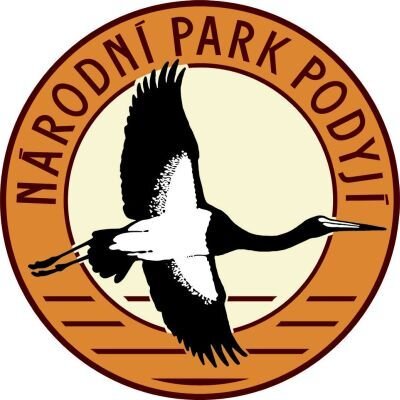Case Study
Invasive river plants eradication in Podyjí and Thayatal National Parks
Contact name
Lenka Reiterová
Institution name
Podyji National Park Administration
Region & country
South Moravian - Czech Republic & Lower Austria - Austria
Summary
Eradication of the neophyte Himalayan Balsam (Impatiens glandulifera) is a successful joint project of two bordering national parks Thayatal (AT) and Podyjí (CZ) that led to a significant decrease of Himalayan Balsam plants in the river valley and the return of native plants. The most important success factors were the common approach to river valley management, access to both river banks by Czech staff, change in management of river valley meadows, and ongoing joint monitoring in the river valley.
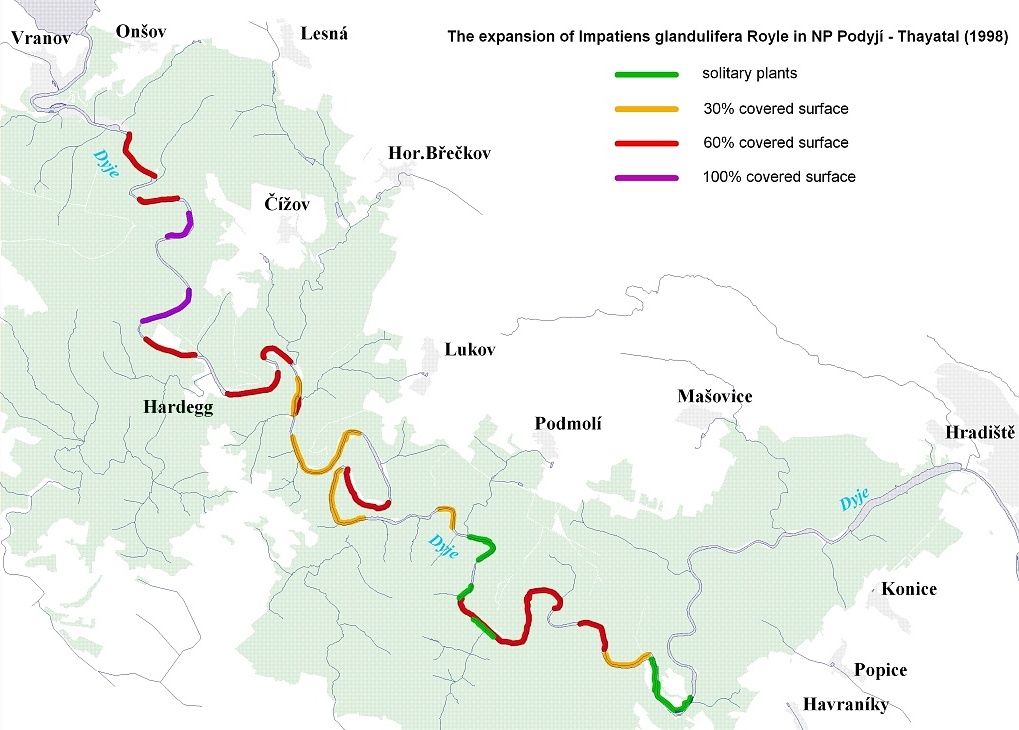
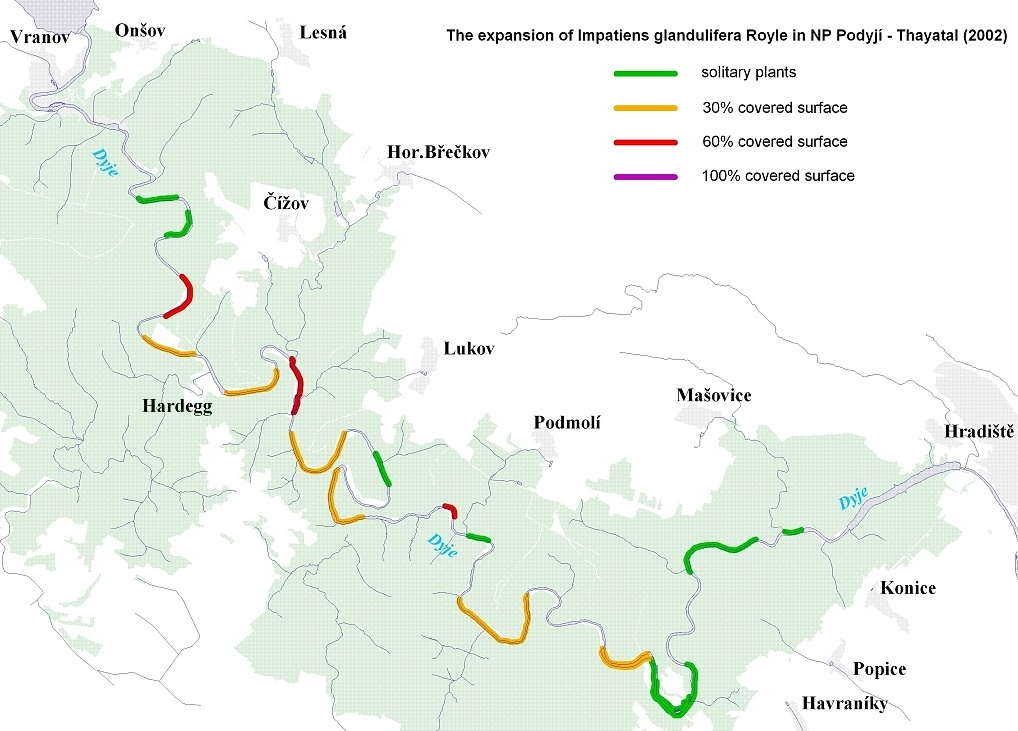
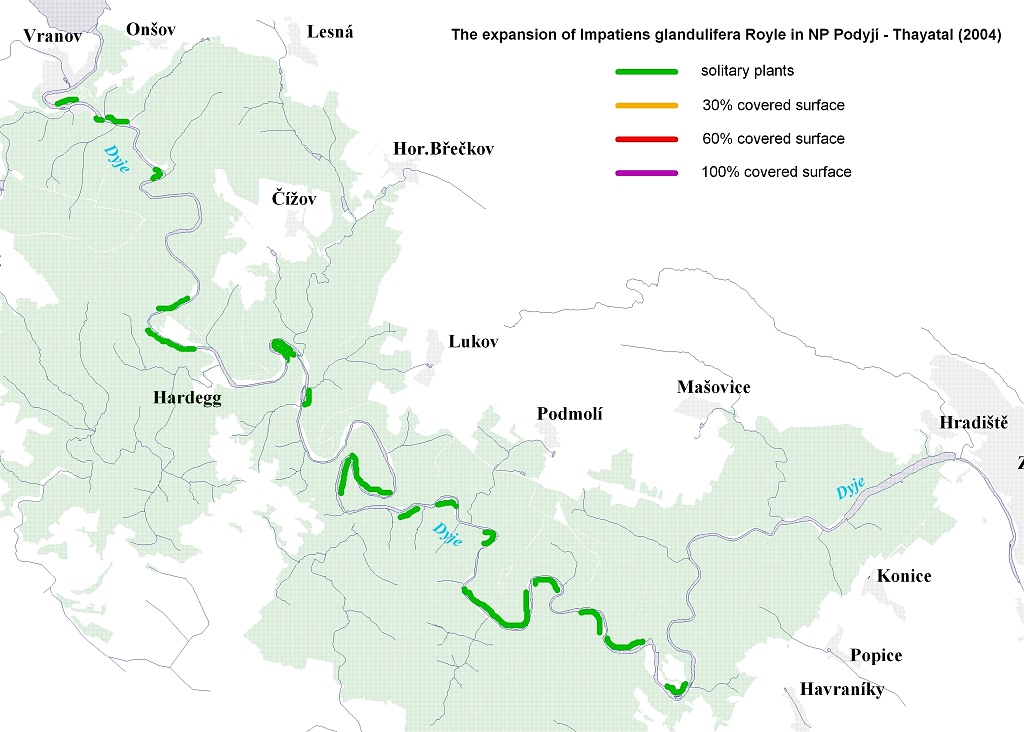
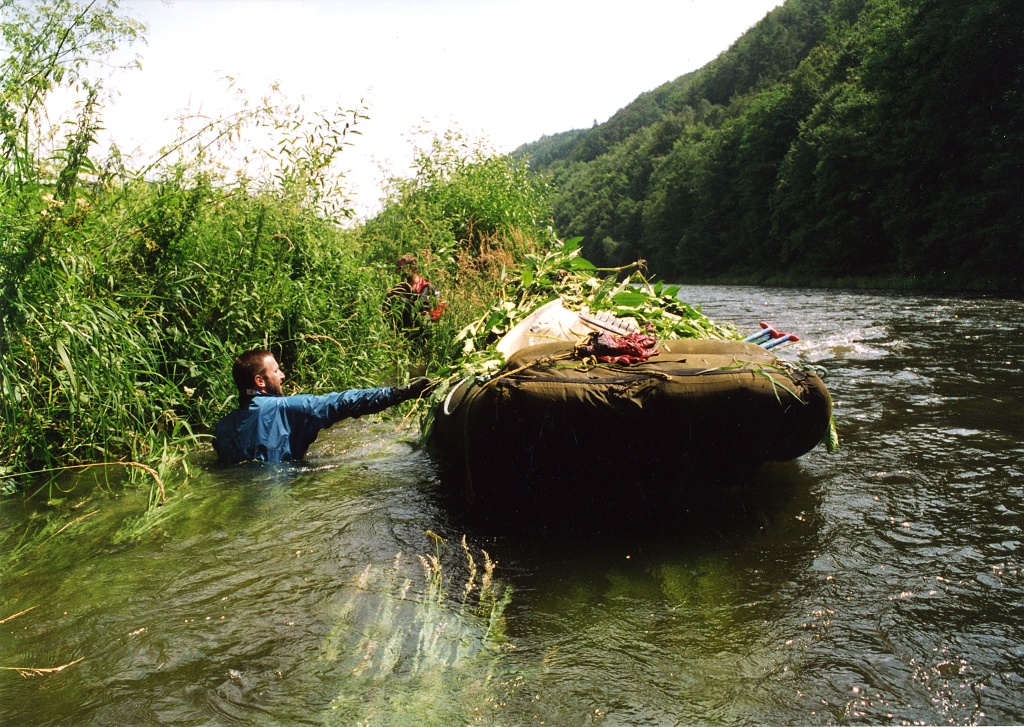
Eradicating Himalayan Balsam manually in Thaya/Dyje River
Photo by: Petr Lazárek
Background of the project
When Podyjí National Park staff went on a random hike near the river bank in mid of the 1990s, it was noticed that Himalayan Balsam was slowly taking ground. Until that time, no measures had been taken to gain control over it. Initial attempts to remove it were very ineffective mostly because they took place on one side of the border only. Additionally, floods on Dyje/Thaya River in spring 1996 helped seeds to spread.
Being able to monitor and combat Himalayan Balsam on both sides of the river Dyje (Czech and Austrian) seemed essential to stop the spread of the plant.
Solution and actions taken
In 2000 Thayatal National Park was established and became a partner of Podyjí National Park in the elimination of the invasive species on the Austrian side of the border. The joint monitoring and removal of Himalayan balsam and other invasive neophytes in the river valley along with mowing of river meadows by local landowners occurs every year. These annual measures are still necessary to control the Himalayan balsam in the valley.
As both parks are opposed to the use of pesticides, individual plants needed to be removed by hand and preferably during the adolescent life stages before seeds emerged. Otherwise, seeds could be spread during removal of the adult plants. Nevertheless, mowing measures proved very effective in places of larger stocks.
Other institutions or parties involved
Podyjí and Thayatal National Parks Administrations hired workers and landowners.
Other contributors:
- Robert Brunner, Thayatal National Park (former director);
- Christian Uebl, Thayatal National Park;
- Sophia Fettinger, solution coauthor, Institute of Silviculture, University of Natural Resources & Life Sciences, Vienna;
- Brady J. Mattsson, solution coauthor, Institute of Silviculture, University of Natural Resources & Life Sciences, Vienna
This case study was collected with the support of PANORAMA Solutions for a Healthy Planet.
Results
The joint monitoring and removal of Himalayan balsam and other invasive neophytes in the river valley is a great success. It continues every year along with mowing of river meadows by local landowners. These annual measures are still necessary to control the Himalayan balsam in the valley. The experience of a successful cooperation through joint invasive-species eradication and monitoring efforts provided added value that encourages and facilitates future transboundary collaboration.
Challenges
Rapid spread of Himalayan Balsam, an aggressive neophyte that can quickly form monocultures and cause large changes to ecosystems that it invades while reducing biodiversity.
Contrasting scientific beliefs between two national parks regarding management effectiveness and handling of invasive species.
Lack of management of river valley meadows by landowners in Thayatal NP, favoring spread of Himalayan Balsam.
Lessons learned
Monitoring of neophytes and communication between the national parks was essential to enable efficient removal efforts and to ensure sustained suppression of invasive plants. Coordinating the mowing of valley meadows by local landowners helped reduce the spread of invasive plants. The presence of invasive species is thus low in numbers and both parks have already developed procedures and practice to control or face their potential increase.
Contact name
Lenka Reiterová
Institution name
Podyji National Park Administration
Website(s)
